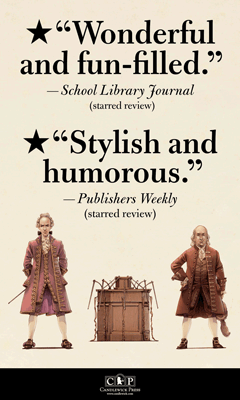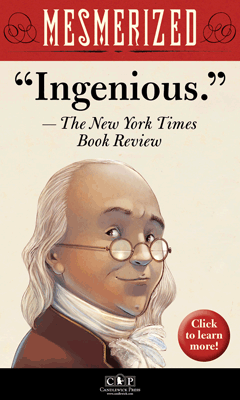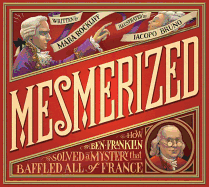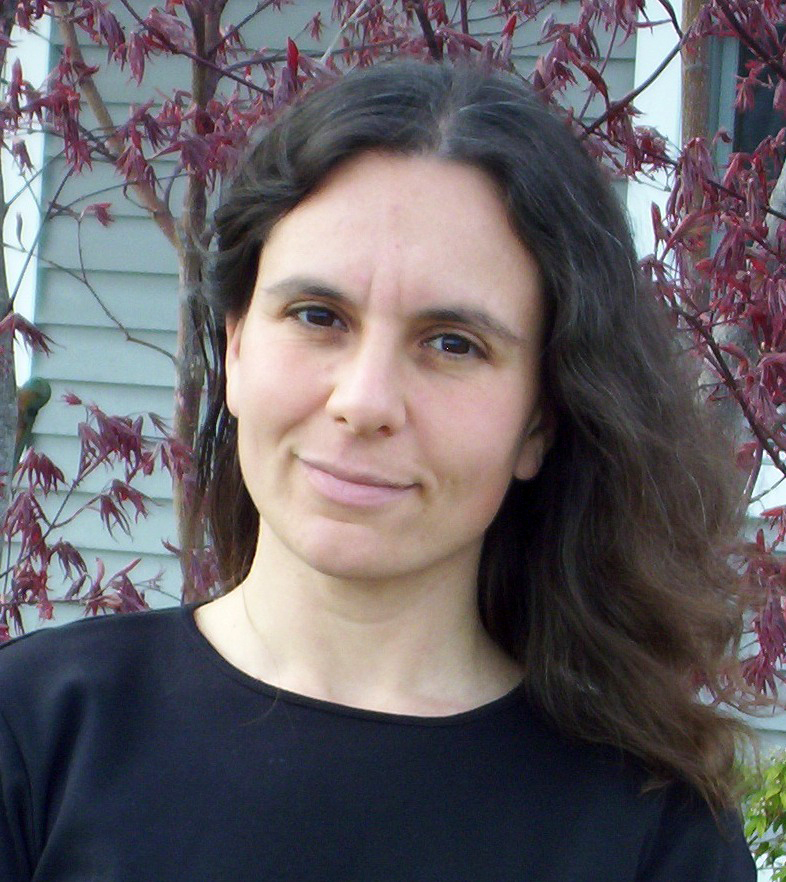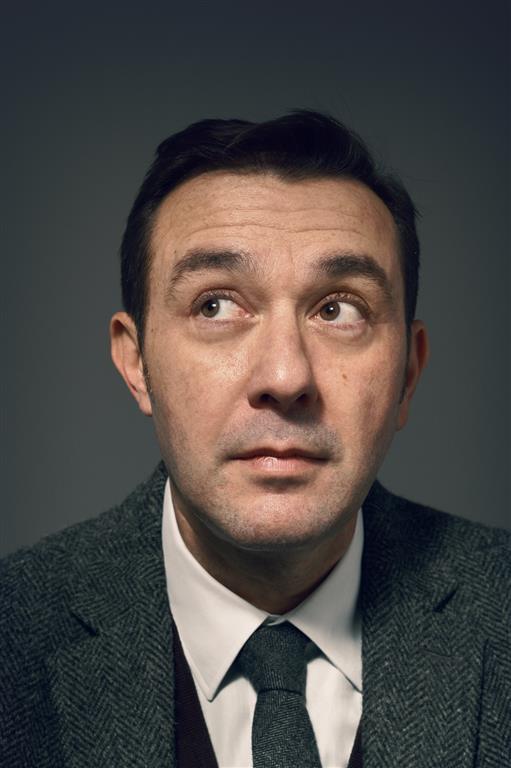Mesmerized: How Ben Franklin Solved a Mystery that Baffled All of France
by Mara Rockliff, illus. by Iacopo Bruno
Mara Rockliff (Gingerbread for Liberty!) and Iacopo Bruno, making his picture-book debut, combine a storyteller's lilt and an artist's flair for fashion in a mesmerizing story of history, science, personalities and the placebo effect.
A map worthy of a cartographer shows the route Ben Franklin took from Philadelphia to Paris in 1776 at the height of the American Revolution. When Ben Franklin arrives, he finds the city "all abuzz" with conversations about science. Bruno depicts with minute precision an electrostatic motor (with its Leyden jars, glass rods and brass thimbles), and a layout of Franklin's kite experiment so detailed children could conduct it themselves. Bruno adds just the right amount of humor, too: a hot air balloon rises to the chants of a duck, rooster and goat crying, "Oh la la!"
At the outset, Rockliff describes the Scientific Method. The explanation appears in a box directly below Franklin's kite experiment, and she uses that as her example. She touches on its four elements: observe, hypothesize, test, support. With the turn of a page, author and artist introduce Dr. Mesmer. His name dominates the spread and nearly breaks the borders of the frame Bruno has created. "But soon all Paris was abuzz about somebody new," Rockliff writes. "Someone remarkable--thrilling--and definitely strange." While Franklin's pages unfold in classic Bulmer and Officina fonts, Mesmer's pages look like gilded manuscripts hand-lettered by monks. In contrast to Franklin's bald spot and buckle shoes, Dr. Mesmer "wore a powdered wig and a fine coat of purple silk. He carried an iron wand. And he claimed to have discovered an astonishing new force."
"Dr. Mesmer was as different from Ben Franklin as a fancy layered torte was from a homemade apple pie." In Bruno's portrait, Ben wears a tasteful beige image of an "apple pie" like a peanut salesman at a ball park. Mesmer sports a purple sign with orange type and a "layered torte" as frilly as a wedding cake, its ends curled like wrapping ribbon. (Ben bears a look that says, "Is he kidding?") Rockliff artfully characterizes Mesmer's mysterious force in scientific terms: "Like a gas, this force could not be seen or touched. Like electricity, it held great power. Like the hot-air balloon, it made what seemed impossible come true." Then author and artist juxtapose its hocus-pocus side, as Dr. Mesmer emits bolts of energy from his fingertips: "Women swooned. Men sobbed. Children fell down in fits."
Every aspect of each spread's design serves to further the story and layer details that differentiate the two men. Examples of Dr. Mesmer's sway appear on a spread dominated by an entranced audience and a red embroidered stage curtain, "At last they came out and announced they were... cured!" Doctors were furious. Their patients all preferred "a wave of Dr. Mesmer's wand" to real medicine. They complain to King Louis XVI ("Dr. Mesmer's force was not like electricity, a gas, or the hot air in a balloon.... It wasn't there!"), who asks Franklin to look into the matter, but Dr. Mesmer won't see him, so Charles, Mesmer's helper, allows Ben to observe him in action. But while others "gasped and groaned--twitched and trembled" at Charles's waving of the wand, Ben does not. Bruno labels each stage of Ben's approach as "The Scientific Method" (e.g., Ben and Charles stand on a box that reads, "Ben observed the difference between the patients' reactions and his own"). When Ben tests his hypothesis ("what the patients felt was caused by their own minds, not by an invisible force"), Bruno stresses the importance of Franklin's discovery by slowing the pace and unveiling the experiment over two full spreads, before and after blindfolding a patient. (Ben "tested patient after patient, but it was always the same").
Besides successfully explaining the Scientific Method, and what we've come to call the placebo effect, author and artist give children insight into human behavior. In one of the most fitting pictures of how gossip spreads perhaps yet seen in a children's book, Bruno draws the king's and Ben's legs in the foreground and, seen through the spaces between, readers glimpse a mob "abuzz"; the words "Mesmer bzz bzz ha ha ha" wind like tickertape, over Notre Dame and above a fleeing Dr. Mesmer, with wand in hand. Children will connect this bzz bzz to the "abuzz" that contributed to Mesmer's rise and that now precipitates his demise.
Rockliff wraps up this charming, informative story with a coda: Franklin returned to America to win the Revolution ("with the help of France"), and his "'blind' test" is still in use. She further elucidates the placebo effect (Bruno cleverly places the text on bottle labels, with "placebo" most prominent), and explains the state of "hypnosis" and that "we still use the word mesmerized when somebody seems to be in a trance." For history buffs, science enthusiasts, and fans of a good story, this one hits all the marks. --Jennifer M. Brown




